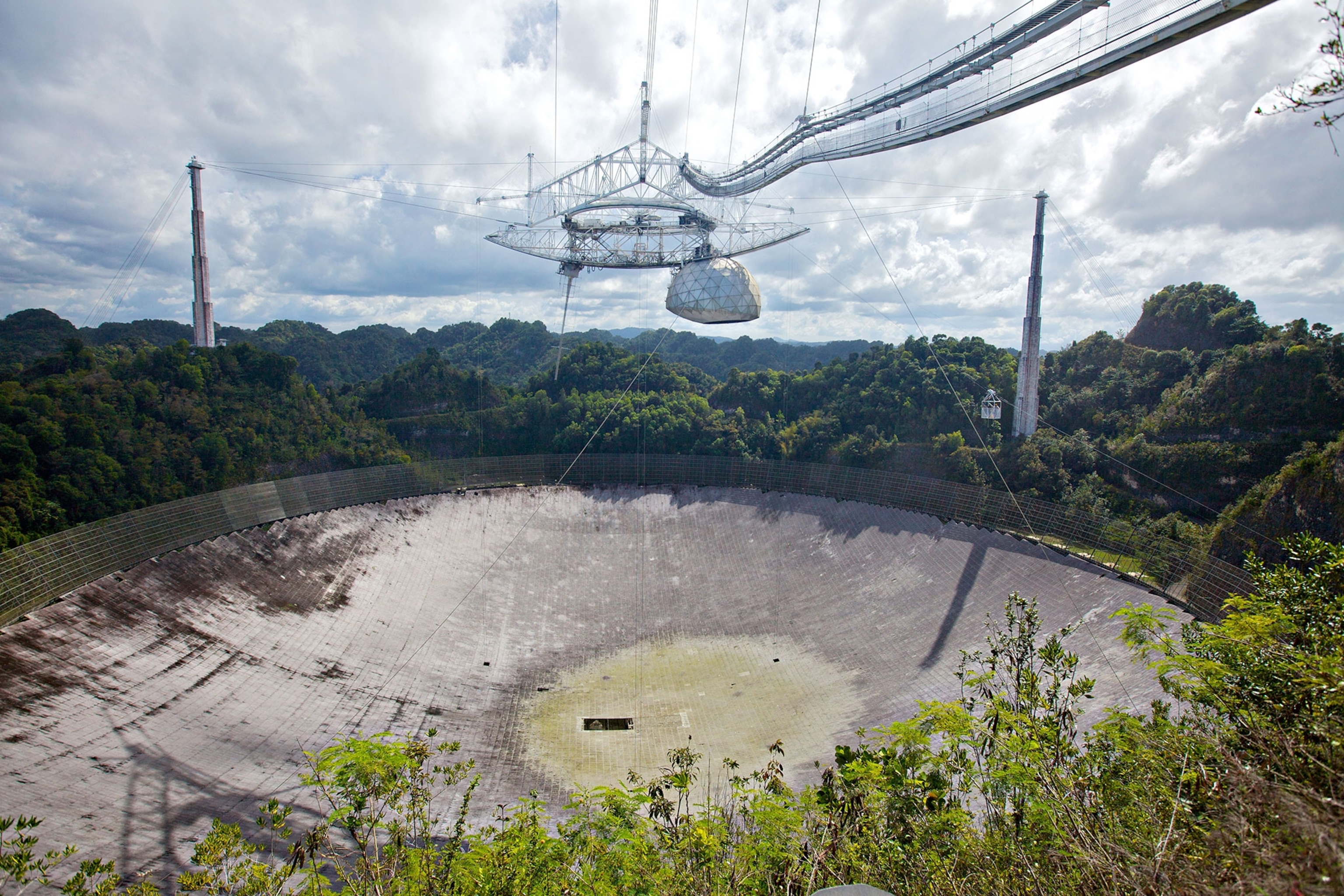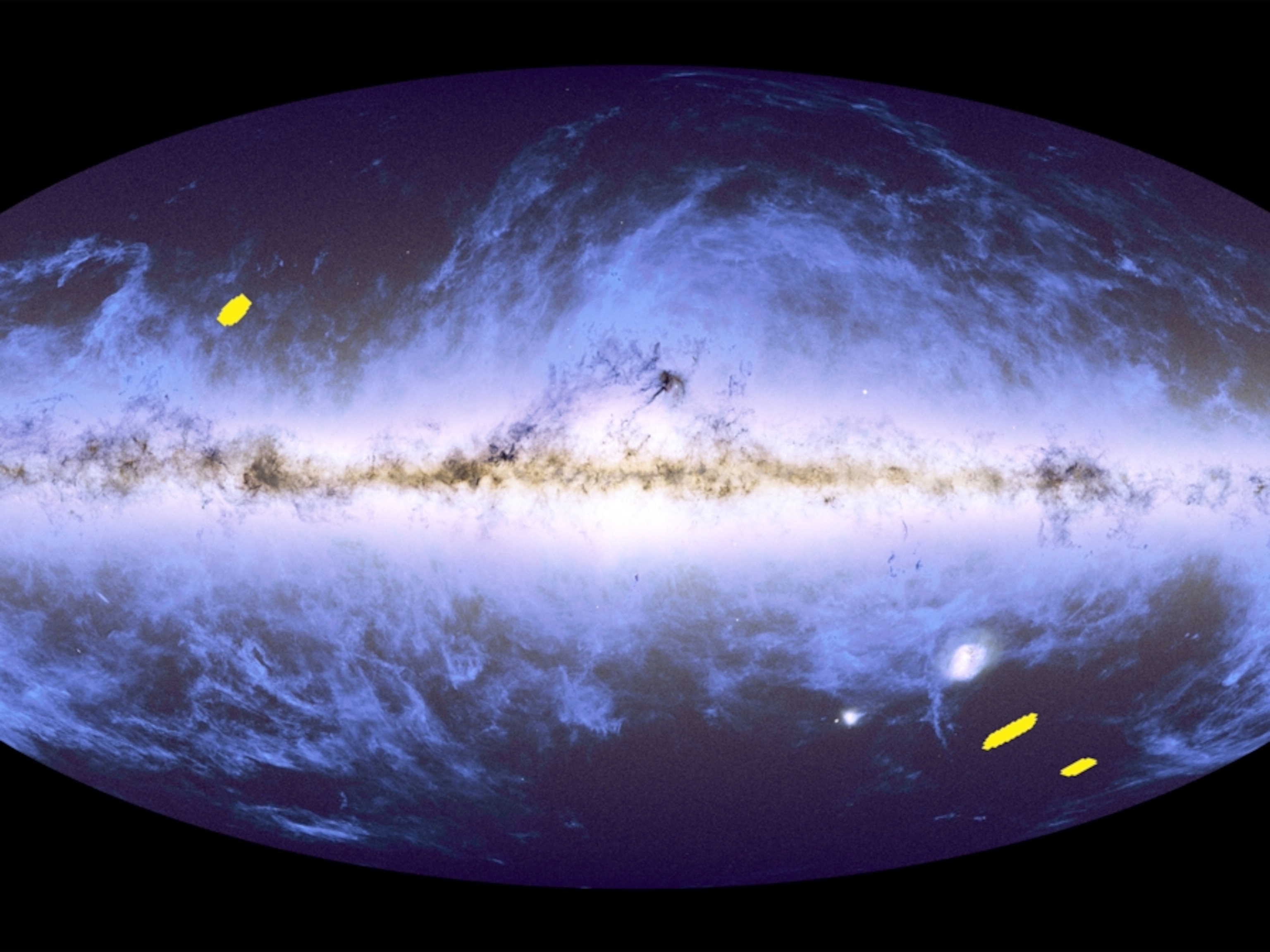
Iconic Arecibo Observatory Saved From Demolition
Famous for its role in the search for intelligent aliens, the world’s second-largest radio telescope has NSF approval to keep doing science.
After a tense and occasionally contentious review, the U.S. National Science Foundation has agreed not to close the Arecibo Observatory, which hosts the world’s second-largest radio telescope. Instead, the science agency will keep the Puerto Rican facility open—but will seek funding partnerships with other organizations.
“This plan will allow important research to continue while accommodating the agency's budgetary constraints and its core mission to support cutting-edge science and education,” the NSF says in their announcement. That decision comes with a big sigh of relief, says observatory director Francisco Córdova, even though it’s not yet clear who will manage the observatory and where the additional funding will come from.
“That adds a level of complexity and stress going forward,” he says. “But today we’re better off than we were yesterday.”
The decision is good news for scientists and for Puerto Rico, which is still struggling to recover from the devastation wrought by Hurricane Maria. Not only does the facility act as a tourist draw and employer for local residents, it also provided shelter and supplies for surrounding communities in the wake of the storm.
Though the observatory sustained damage from the hurricane and is still without power, its deep well provided water for local communities, and its helipad served as a base for supply distribution. Observatory staffers helped clear roads and allowed residents to communicate with others via short-wave radio.
Science Heavyweight
Nestled into a sinkhole in the Puerto Rican jungle, the Arecibo Observatory has achieved iconic status since its construction in the 1960s. Through its many roles in science discoveries and popular culture, it has become arguably the world’s most recognizable astronomical facility: James Bond destroyed the place in GoldenEye, and Ellie Arroway visited it in Contact.
It also provided the first indirect evidence for gravitational waves, spotted the first planets orbiting a star other than the sun, and—43 years ago to the day—sent the first targeted message to the stars as part of the Search for Extraterrestrial Intelligence, or SETI (a project of former observatory director Frank Drake, who happens to be my dad).
It sent that message with its radar transmitter, which today is used to study asteroids that might one day collide with Earth. The telescope is also a crucial part of today’s searches for more gravitational waves using rapidly spinning stellar corpses called pulsars.
“It remains the most sensitive telescope in the world for pulsar timing and provides a critical resource for training students throughout the U.S. and Puerto Rico,” says Maura McLaughlin, chair of the NANOGrav collaboration, which seeks out these ripples in space-time.
Yet, buckling under the weight of budget woes, the NSF decided a few years ago to start the process of divesting from the facility and closing it down. That meant considering, among other options, total demolition of the facility. But before the science agency could even do something as minor as simply withdrawing the $8.2 million it provides each year for the observatory to function, it needed to solicit input from scientists and the community about its proposal, which it did starting in early 2016.
It also needed to assess the environmental consequences of its proposition, and somehow work around the fact that the observatory had been listed on the U.S. National Register of Historic Places, as well as Puerto Rico's State Historic Preservation Office.
To say people were fretting about the impeding decision is no overstatement.
“I AM LITERALLY CRYING AT WORK! TEARS OF JOY!!! THE OBSERVATORY SURVIVES!!!,” tweeted planetary scientist Ed Rivera-Valentin, who works at the observatory and has been instrumental in helping train the next generation of Puerto Rican scientists.
“It’s a very big deal, it’s a very important step for us,” Córdova says. “It stops all those rumors and uncertainties about demolition or mothballing and all sorts of negative things.”
Now, the observatory’s staff can begin planning for its next chapter. That means waiting to find out who will manage the facility, a decision that is expected to come in the next several weeks and that will be implemented in March of next year, when the current management contract expires.
It also means finding out who the new funding partners will be, since NSF will slowly reduce the amount of money it annually gives the facility from roughly $8 million to about $2 million, according to Nature. As well, the observatory needs to make some repairs to storm-damaged equipment, notably a line feed used for ionospheric observations.
But overall, the facility weathered the tempest quite well and is already back doing science observations with the help of diesel-powered generators—an achievement Córdova ascribes to the dedication of the staff.
“They deserve all the credit,” he says. “The fact that we’re continuing operating even under these circumstances is truly a testament to the dedication and resilience of the Arecibo staff.”





